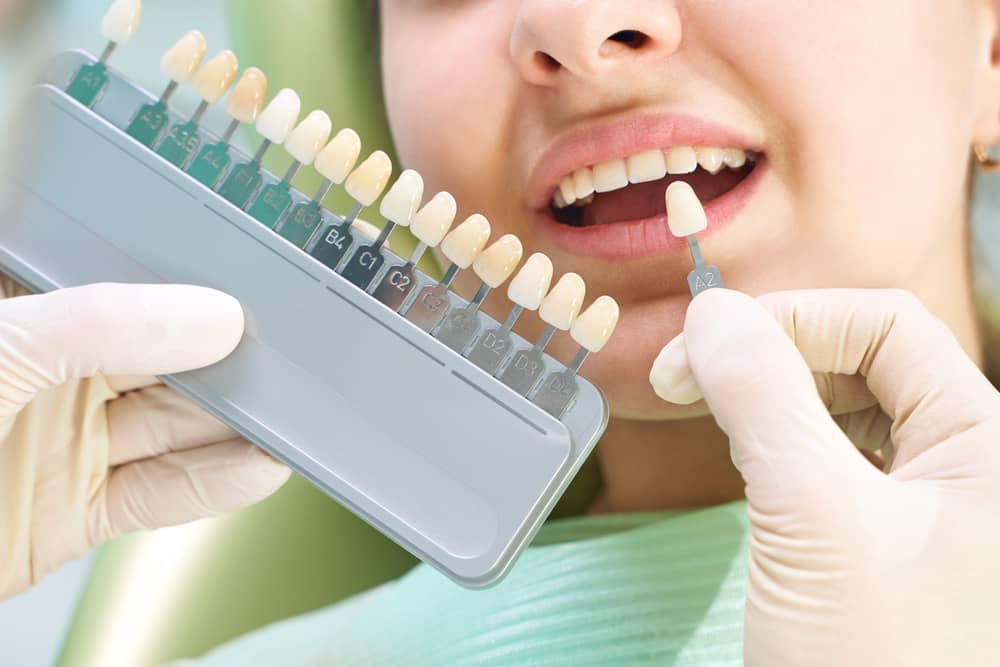In reality, a beautiful smile can be the result of a combination of both genetics and dental work. Some people are fortunate to have naturally attractive smiles due to their genetics, while others may need dental interventions to achieve the smile they desire. Dentistry has advanced significantly, allowing people to enhance their smiles regardless of their genetic predisposition.
Ultimately, whether a person has a “great smile” due to genetics or dental work, what matters most is that they feel confident and comfortable with their appearance. Regular dental care, good oral hygiene practices, and professional dental advice can help individuals achieve and maintain a healthy and attractive smile, whether they were born with it or had a little help along the way.
What are Porcelain Veneers?
Porcelain veneers are thin, custom-made shells of porcelain that are designed to cover the front surface of a tooth. They are a popular cosmetic dentistry option used to improve the appearance of teeth that are discolored, stained, chipped, misaligned, or have other aesthetic imperfections. Porcelain veneers are often used to create a more attractive and natural-looking smile.
Here’s how the process of getting porcelain veneers typically works:
Consultation: The process usually begins with a consultation with a dentist or cosmetic dentist. During this consultation, the patient discusses their goals and what they would like to change about their smile. The dentist will assess the patient’s oral health and determine if veneers are a suitable option.
Preparation: To prepare the teeth for veneers, a small amount of enamel is usually removed from the front surface of the teeth. This is necessary to create space for the veneers and ensure they fit naturally without adding bulk to the teeth. In some cases, minimal or no enamel removal may be required, depending on the specific situation.
Impressions: After the teeth are prepared, the dentist takes impressions of the teeth. These impressions are sent to a dental laboratory where the custom veneers will be fabricated to match the desired size, shape, and color.
Temporary Veneers:Temporary veneers are made of special acrylicplaced on the teeth to protect them while the permanent veneers are being made.
Fitting: Once the permanent veneers are ready, the dentist checks their fit and appearance on the patient’s teeth. Adjustments may be made as necessary to ensure a precise fit and the desired look.
Bonding: The final step involves bonding the porcelain veneers to the front surfaces of the teeth using a dental adhesive. The dentist carefully positions each veneer and then uses a special light to harden the adhesive, securing the veneers in place.
Porcelain veneers offer several advantages:
Aesthetic Improvement: They can dramatically improve the appearance of teeth by covering stains, discoloration, chips, and minor misalignments.
Natural Appearance: Porcelain veneers are known for their natural appearance and ability to mimic the translucency and luster of natural teeth.
Stain Resistance: Porcelain is highly resistant to staining from coffee, tea, and other common dietary sources of discoloration.
Durability: When properly fabricated and maintained, veneers can last for a life time.

